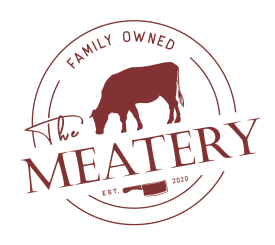Kobe beef is more than just a luxurious cut of meat—it's a global culinary phenomenon revered for unmatched quality, taste, and tradition. Hailing exclusively from Japan’s Hyogo Prefecture, specifically around the city of Kobe, authentic Kobe beef comes from the carefully bred Tajima-gyu cattle, a specialized lineage within the renowned Japanese Black (Kuroge Washu) breed.
While the mouthwatering taste and melt-in-your-mouth texture are significant draws, Kobe beef's prestige is equally rooted in its high standards and deep cultural resonance. Protected under strict Geographical Indication (GI) laws, the Kobe name legally applies only to beef meeting precise criteria within this specific region.
The Rich and Storied History of Kobe Beef
The history of Kobe beef begins in the early 19th century when Japan was emerging from centuries of seclusion. As the country embraced Western influences, beef—previously absent from traditional Japanese diets—became an intriguing new delicacy.
Selective breeding of Tajima cattle began during the Meiji Restoration (1868-1912), aiming to perfect traits like marbling and tenderness. Japan's rapid modernization increased demand for beef, particularly high-quality cuts. By the mid-20th century, Japanese farmers had mastered breeding techniques to yield extraordinarily marbled beef.
Today, Kobe beef symbolizes culinary luxury, tradition, and meticulous craftsmanship, celebrated globally yet rooted deeply in Japanese culture.
Breed-Specific Standards: The Legacy of Tajima-gyu
Authentic Kobe beef comes exclusively from Tajima-gyu cattle meeting strict qualifications. This breed has maintained a pureblood lineage for generations, protected by rigorous certification processes overseen by the Kobe Beef Marketing and Distribution Promotion Association:
-
Cattle must originate from pure Tajima lineage and be raised solely in the Hyogo Prefecture.
-
Processing must occur in officially sanctioned slaughterhouses within the region.
-
Beef must achieve at least a Beef Marbling Score (BMS) of 6, on a scale where 12 is the maximum.
-
Carcasses must receive an A4 or A5 grading, Japan’s highest beef quality categories.
-
Post-slaughter, animal weight must not exceed 470 kg (approximately 1,036 lbs) to maintain quality.
-
Each Kobe beef cut carries a unique 10-digit ID for complete traceability.
These strict guidelines ensure genuine Kobe beef remains exclusive, explaining its premium price and global acclaim (Fortunately, The Meatery provides a certificate of authenticity every time you order Kobe Beef!)
Animal Welfare and Unique Feeding Practices
Much of Kobe beef’s allure lies in the legendary care these animals receive. While myths of cows serenaded by classical music might be exaggerated, high animal welfare and stress minimization are genuinely pivotal.
Tajima cattle intended for Kobe beef production enjoy:
-
A specialized diet rich in rice straw, corn, barley, and nutrient-dense grains.
-
Low-stress environments with meticulous climate control and attentive handling.
-
Occasional massages designed historically to enhance muscle fibers, though modern breeding practices have reduced their necessity.
-
Spacious accommodations allowing ample movement and outdoor access.
These thoughtful practices directly contribute to the exceptional marbling and unparalleled tenderness Kobe beef is renowned for.
What Makes Kobe Beef So Distinctive?
Flavor Profile
Kobe beef's distinct taste is characterized by an intense umami flavor combined with a buttery sweetness. This unique taste profile results from high concentrations of delicate intramuscular fat, melting at lower temperatures than regular beef fat, creating a unique melt-in-your-mouth experience.
Texture and Mouthfeel
The dense, intricate marbling provides Kobe beef with a velvety, indulgent texture unrivaled by other meats. Simple preparation methods—such as grilling or light searing—highlight its sumptuous nature without overpowering its inherent flavors.
When compared to standard Angus or even USDA Prime beef, Kobe beef is consistently:
-
More tender
-
Richer and deeper in flavor
-
Higher in natural fats, contributing significantly to its silky mouthfeel
These factors make Kobe beef particularly popular among Michelin-star chefs and gourmet dining enthusiasts seeking exceptional culinary experiences.
Is Kobe Beef Worth Its Premium Price?
Evaluating whether Kobe beef justifies its high price depends on your personal culinary expectations. For everyday meals or casual barbecues, other high-quality beef might suffice. However, for connoisseurs seeking extraordinary, once-in-a-lifetime gastronomic experiences, authentic Kobe beef undeniably offers an unparalleled indulgence.
Think of Kobe beef as akin to owning a luxury watch or fine jewelry—not for everyday use, but cherished for exceptional moments and experiences.
Culinary Applications: Enjoying Kobe Beef at Its Best
The exceptional quality of Kobe beef necessitates careful preparation—less truly is more. The beef's intrinsic flavors and textures stand best without elaborate seasoning or complex recipes.
Popular Kobe Beef Preparation Methods:
-
Teppanyaki (Hot Plate Grilling): Quick searing maintains juiciness and enhances the beef’s rich flavor.
-
Sukiyaki and Shabu-shabu: Thin slices gently cooked in savory broths highlight the meat’s tender nature.
-
Sashimi-Style or Tataki: Served raw or lightly seared, this method best showcases the sophisticated marbling and delicate flavors.
Simple seasoning, usually minimal salt and pepper, is recommended, and a medium-rare preparation ensures the optimal taste and texture experience.
Kobe Beef and Its Environmental and Cultural Impact
Beyond gastronomy, Kobe beef has meaningful cultural and environmental implications. Its production upholds sustainable agricultural practices deeply intertwined with Japanese cultural values of respect for animals and nature. Smaller-scale production ensures lower environmental impact compared to large-scale cattle farming, aligning with ethical consumer preferences for sustainability.
Culturally, Kobe beef encapsulates centuries of Japanese tradition, excellence, and artisanal farming, carrying historical significance far beyond mere cuisine.
Final Thoughts: Celebrating a Legacy of Culinary Excellence
Kobe beef represents far more than premium dining—it embodies generations of tradition, meticulous care, and cultural heritage. From Hyogo Prefecture’s serene pastures to prestigious tables worldwide, Kobe beef continues enchanting culinary enthusiasts with every exquisite bite.
Experiencing authentic Kobe beef is not merely eating; it's an immersion into rich culinary history, refined techniques, and deep respect for quality and tradition.
Ready to explore the pinnacle of beef excellence? Discover authentic Kobe and premium wagyu beef at TheMeatery.com, where tradition, taste, and unparalleled quality converge.









